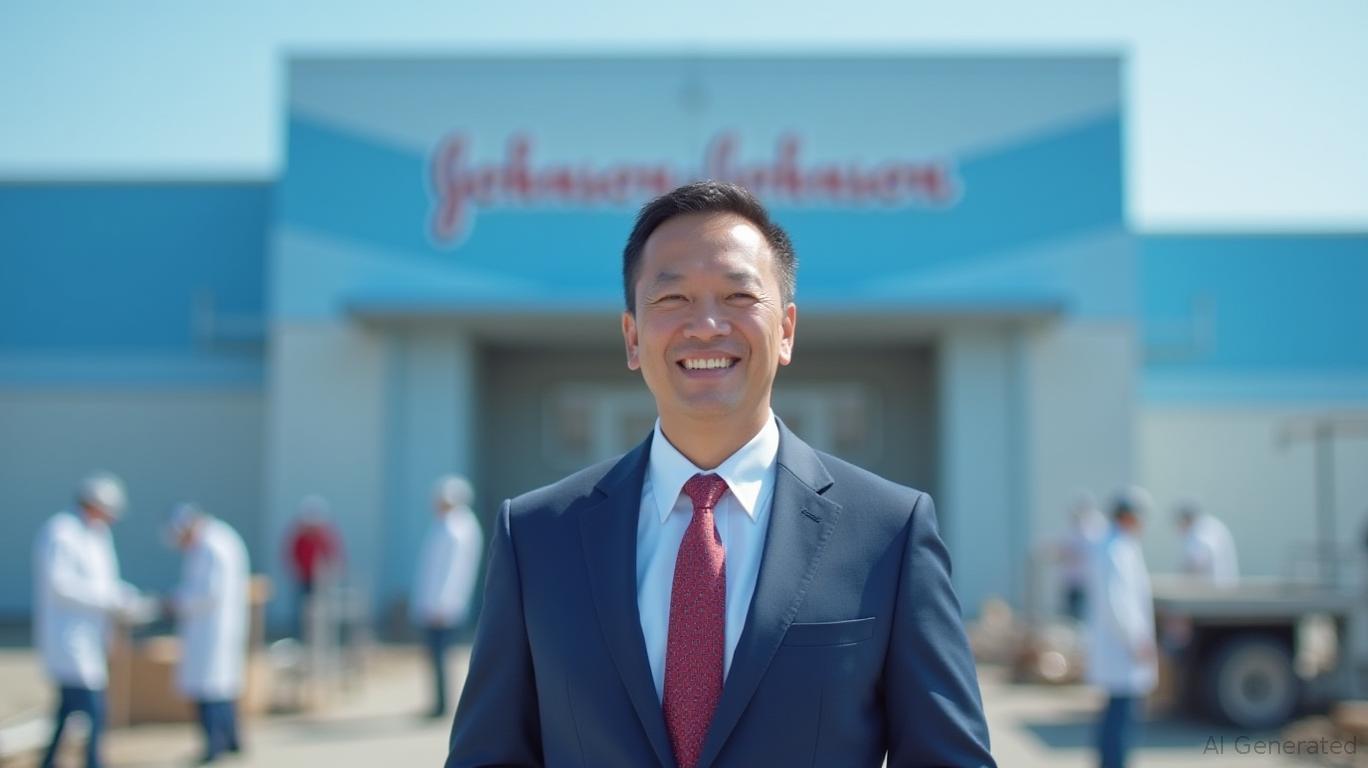Johnson & Johnson: Navigating Tariff Headwinds to Secure Future Growth
In a world increasingly defined by trade tensions and shifting geopolitical landscapes, few companies face steeper tariff-related challenges than Johnson & Johnson (J&J). Yet, beneath the immediate financial headwinds, a clear strategic pivot is underway. With a $400 million tariff-driven drag on its 2024-2025 performance, J&J is not merely reacting to trade policies—it is reengineering its global footprint to turn long-term risk into competitive advantage. For investors, the question is no longer whether tariffs will disrupt the
giant, but whether its resilience strategies position it to outperform in the years ahead.The Tariff Crossroads: Cost, Strategy, and Opportunity
The current tariff landscape is punishing. China's retaliatory tariffs on U.S.-origin medical devices account for the bulk of J&J's $400 million annualized tariff burden. Chief Financial Officer Joseph Wolk notes that these costs are “penalizing” but manageable, as they are absorbed into inventory and gradually released over time. However, the bigger threat lies in future tariff risks: proposed U.S. levies on pharmaceuticals and the broader industry context of 10% global tariffs, 245% duties on Chinese APIs, and 25% medical device taxes from North American trade partners.
Here's where J&J's strategic agility shines. Rather than passively enduring tariffs, the company is leveraging tax incentives and supply chain diversification to transform pain points into profit drivers.

The $55 Billion Bet: Building Resilience Through Investment
J&J's most compelling move is its $55 billion, four-year U.S. investment blitz, anchored by a state-of-the-art biologics plant in North Carolina. This is no political stunt: CEO Joaquin Duato explicitly ties the decision to tax reforms, not tariffs. The facility will produce high-margin biologics, shielding J&J from reliance on foreign APIs and reducing supply chain fragility. Critically, this aligns with a broader industry shift toward “onshoring” production to mitigate tariff risks—a trend DelveInsight identifies as a $200+ billion opportunity by 2030.
But the restructuring doesn't stop there. J&J is exiting non-core product lines, consolidating manufacturing, and targeting $900 million in restructuring costs by 2027. While this will temporarily depress sales (a $250 million hit over two years), the goal is surgical: focus on high-growth divisions like oncology and neurotech, where J&J's Q1 2025 sales surged 20% year-over-year.
Why the Market is Underestimating J&J's Resilience
Bearish investors fixate on the near-term tariff costs and restructuring pain. But three factors suggest this is a buying opportunity:
Profitability Through Diversification: J&J's global supply chain overhaul—expanding API production in Europe and India—will insulate it from China's API tariff spikes (up to 245%). This is a $10 billion annual spend area for the pharma industry, and J&J's early moves here create a moat competitors may struggle to match.
Debt-Adjusted Value: With a dividend yield of 2.5% and a forward P/E of 18x, J&J trades at a discount to peers like Medtronic (22x) despite its stronger balance sheet ($30B cash vs. $15B net debt). The restructuring costs are a one-time drag, not a recurring issue.
Pipeline Power: The Intra-Cellular Therapies acquisition and its Caplyta schizophrenia treatment have already boosted 2025 sales guidance to $92 billion. Meanwhile, the oncology division's 20% growth hints at underappreciated potential in therapies like Tecentriq and Erleada.
The Bottom Line: A Tariff-Proof Play for 2025 and Beyond
The market is pricing in J&J's tariff pain but not its resilience. The restructuring costs are a speed bump on the road to margin expansion, while its $55B U.S. investment and global supply chain strategy position it to thrive in a post-tariff world. With a dividend yield offering downside protection and oncology sales accelerating, J&J is primed to outperform once the fog of trade uncertainty lifts.
Investors who act now can buy a $90B+ revenue juggernaut at a 15% discount to its 2027 fair value—provided they look past the noise of short-term tariffs and see the structural advantages J&J is building. This isn't just a medtech stock; it's a blueprint for global corporate resilience in the 21st century.
Action Items:
- Buy JNJ at current levels, targeting a 12-month price target of $185 (20x 2025 EPS).
- Monitor: U.S.-China trade talks, FDA approvals for oncology pipelines, and restructuring execution timelines.
The next decade will belong to companies that turn trade headwinds into strategic tailwinds. J&J is proving it can do just that.

Comments
No comments yet